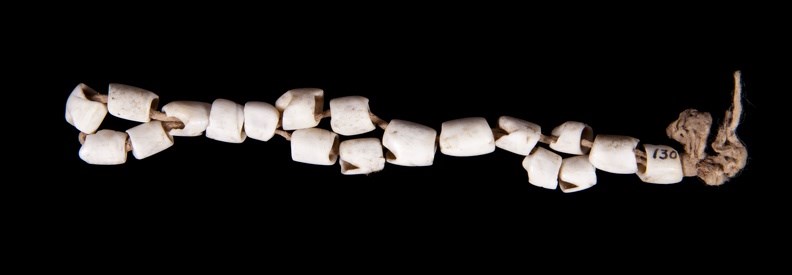
NPS Photo Sinagua TradingDo you own anything at home that comes from another place? How did you get it?The Sinagua used many resources found here to thrive. But they also used things that came from other places. They got these items through trade networks. Some examples of these include: Shells from the Gulf of America and California; decorated pottery, turquoise, and obsidian from Northern Arizona; and macaws from Central America. They likely traded these materials for salt or cotton, which were valuable products that the Sinagua produced.The Sinagua used items like obsidian to make tools, such as knives and projectile points, that they needed to survive. But they used things like shells and turquoise for decorative purposes. The Sinagua recieved these items through trade networks with other native groups, like the Hohokam, Ancestral Puebloan, and Mogollon peoples. We find objects made by the Sinagua in other areas, and we find items from other areas here, where the Sinagua lived. We assume they traded to get these items. Studying these items helps us understand that the Sinagua were not isolated, but had connections with other groups of people. For example, the pithouse and irrigation canals at Montezuma Well are considered to be Hohokam technology. Because we find these structures where the Sinagua were living, we think that there may have been contact between these two cultures. Trade often spreads ideas and technology like this by having people come into contact with each other. It also allows us to get resources that we need, but might not have access to. Think about all those items you own that come from other places. Would it be hard to live without them? 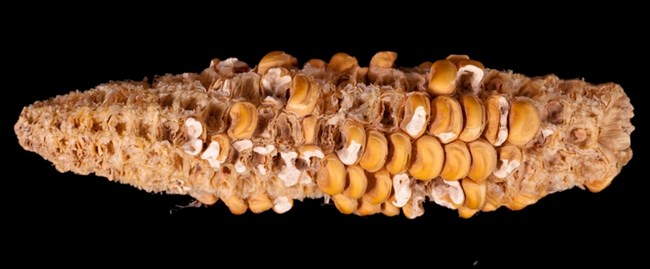
NPS Photo Sinagua FarmingWhere does your food come from? If you lived here 800 years ago, what would you eat?As you look around the desert, it might seem like there is little food or water. But to the Sinagua, this land contained all the necessary resources they needed to live and thrive.The Southern Sinagua who lived at [Montezuma Castle/Tuzigoot] were primarily farmers. They planted corns, beans, and squash for food. They also planted cotton for weaving and trading. Unlike the Northern Sinagua from the Flagstaff area, who relied on rainwater for farming, the Southern Sinagua of the Verde Valley built irrigation canals to improve their farming. Sinagua farming technology was complex. Their irrigation canals channeled water from Beaver Creek and Montezuma Well to farm fields. The also used tools like stone axes and stone knives to harvest food, ceramic vessels to store dried crops, as well as manos and metates (grinding stones) to prepare food. They supplemented their diet with occasional hunting, fishing, and gathering of native plants. Some of these plants, like prickly pear, agave, and mesquite, are still eaten today. Evidence suggests that the Sinagua cultivated plants like corn and agave, resulting in bigger and sturdier crops over time. Learning how the Sinagua got their food helps us understand their environment and how they thrived in the seemingly harsh desert. 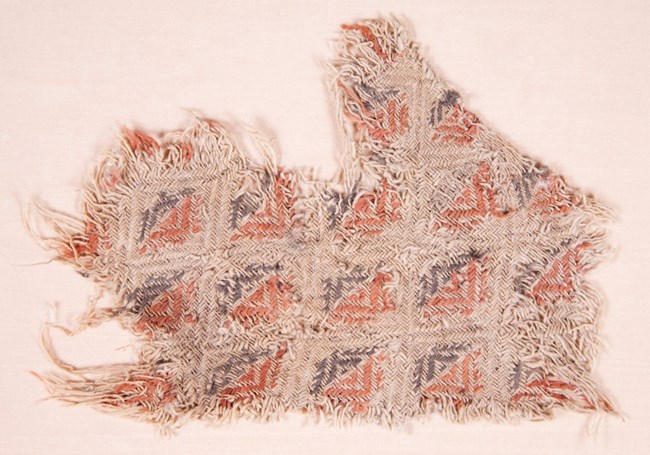
NPS Photo CraftsWhen you see something beautiful, how do you react? What do you think or feel?Just like us, the Sinagua enjoyed beautiful arts and crafts. The Sinagua not only used the resources around them to survive in the Verde Valley; they also used these resources to make beautiful objects that they enjoyed. What they could not get on their own, they traded for. These artifacts can tell us a story about the Sinagua’s ingenuity, resourcefulness, and what they found desirable.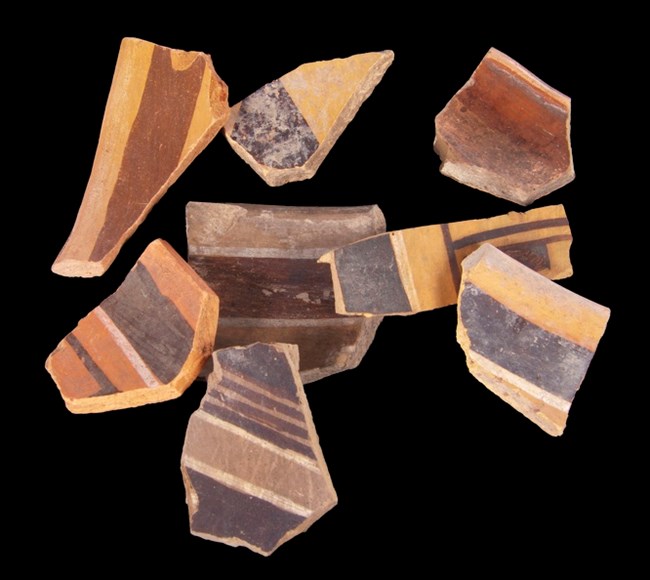
NPS Photo PotteryPottery is an advanced technology because it requires combining clay, water, and fire into a delicate product. The Sinagua made pottery using a paddle and anvil technique and local clays. The Sinagua mostly produced undecorated pottery, often called plainware. Decorated pottery was found at [Montezuma Castle/Tuzigoot], but came from other areas in Arizona. The Sinagua traded with other ancestral groups, like the groups that lived in modern-day northern Arizona, to get it. The types of decorated pottery found at Montezuma Castle can help us learn who the Sinagua traded with and what they found valuable. Decorated ceramics likely held important meanings for the Sinagua.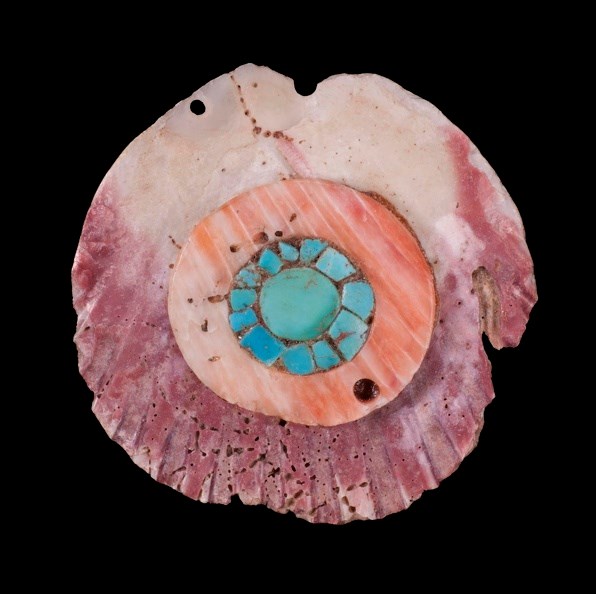
NPS Photo JewelryJust like us, the Sinagua were very fashionable! They made some jewelry out of local materials, like argillite, a red rock found in the Verde Valley. Others were traded in, like turquoise from Northern Arizona, or shells from as far away as California or the Gulf of America, likely traded in by the Hohokam. These products were probably very valuable-both culturally and economically-to the Sinagua because they came from so far away. Beads were made by drilling holes into stone or shells. Popular types of jewelry were necklaces, bracelets, and nose plugs. These artifacts help us understand what types of crafts appealed to the Sinagua and what they found valuable.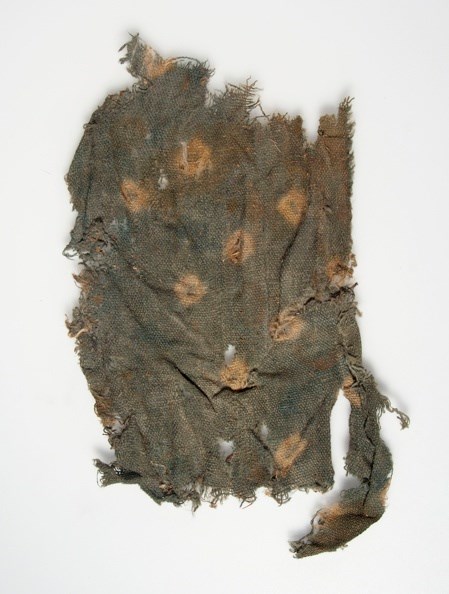
WeavingThe production of cloth requires access to a source of fiber. Thanks to their irrigation canals, the Sinagua accomplished this by growing cotton. The Sinagua produced some of the finest textiles in the Southwest with intricate designs. Their textiles were a highly coveted trade item by other ancient groups in Arizona. Cloth was dyed using plants and minerals, like hematite. The Sinagua also wove using native plant fibers, like agave and yucca, to make mats, sandals, and baskets. The intricacy of Sinagua weaving and dying demonstrates the skills and knowledge of their craftspeople. |
Last updated: February 18, 2025
